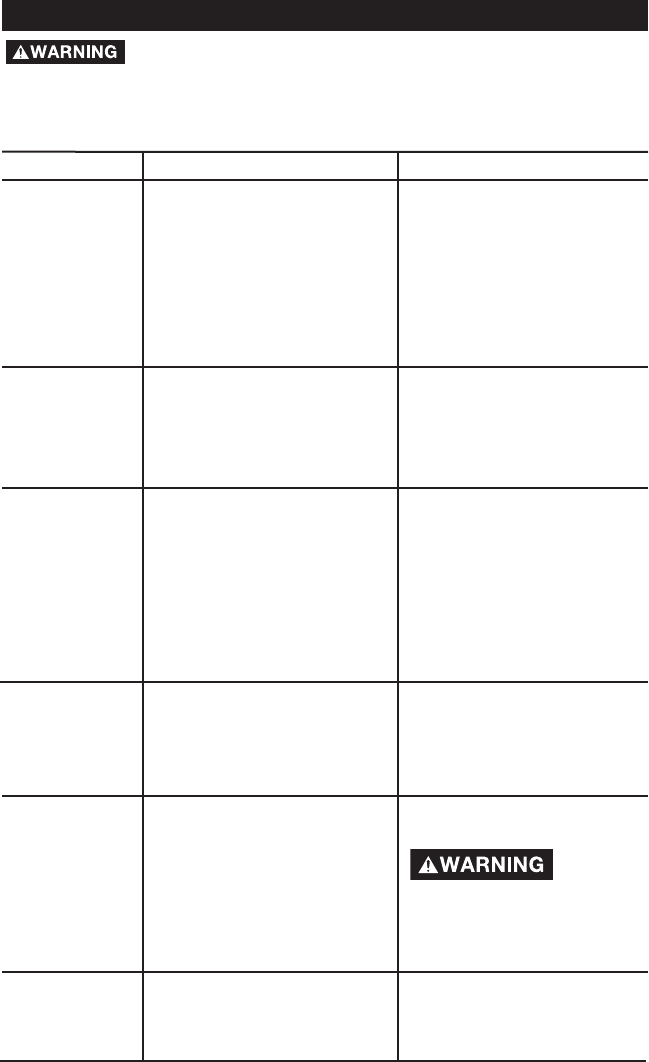
24- ENG
D24910
TROUBLESHOOTING
Performing repairs may expose voltage sources, moving
parts, or compressed air sources. Personal injury may occur. Before serv-
icing: Unplug or disconnect electrical supply to the air compressor, bleed
tank of pressure, and allow the air compressor to cool.
PROBLEM
CAUSE
CORRECTION
Pressure switch does not
shut off motor when com-
pressor reaches “cut-out”
pressure.
Pressure switch “cut-out”
too high.
Move On/Auto/Off lever to
the “OFF” position, if the air
compressor does
not shut off, contact a
Trained Service Technician.
Contact a Trained Service
Technician.
Excessive tank
pressure - safe-
ty valve pops
off.
Tube fittings are not tight
enough.
Tighten fittings where air can
be heard escaping. Check
fittings with soapy water
solution. DO NOT OVER-
TIGHTEN.
Air leaks at
fittings.
Air leaks at
pressure switch
release valve.
(if equipped)
Defective pressure switch
release valve.
Contact a Trained Service
Technician.
Air leaks in air
tank or at air
tank welds.
Defective air tank.
Air tank must be replaced.
Do not repair the leak.
Do not
drill into,
weld or otherwise modify air
tank or it will weaken. The
tank can rupture or explode.
Air leaks
between head
and valve plate.
Leaking seal.
Contact a Trained Service
Technician.
Air leaks at or
inside check
valve
Check valve seat damaged.
A defective check valve
results in a constant air leak
at the pressure release valve
when there is pressure in the
tank and the compressor is
shut off. Replace check
valve. Refer to the “To
Replace or Clean Check
Valve” in the “Service and
Adjustments” section.


















